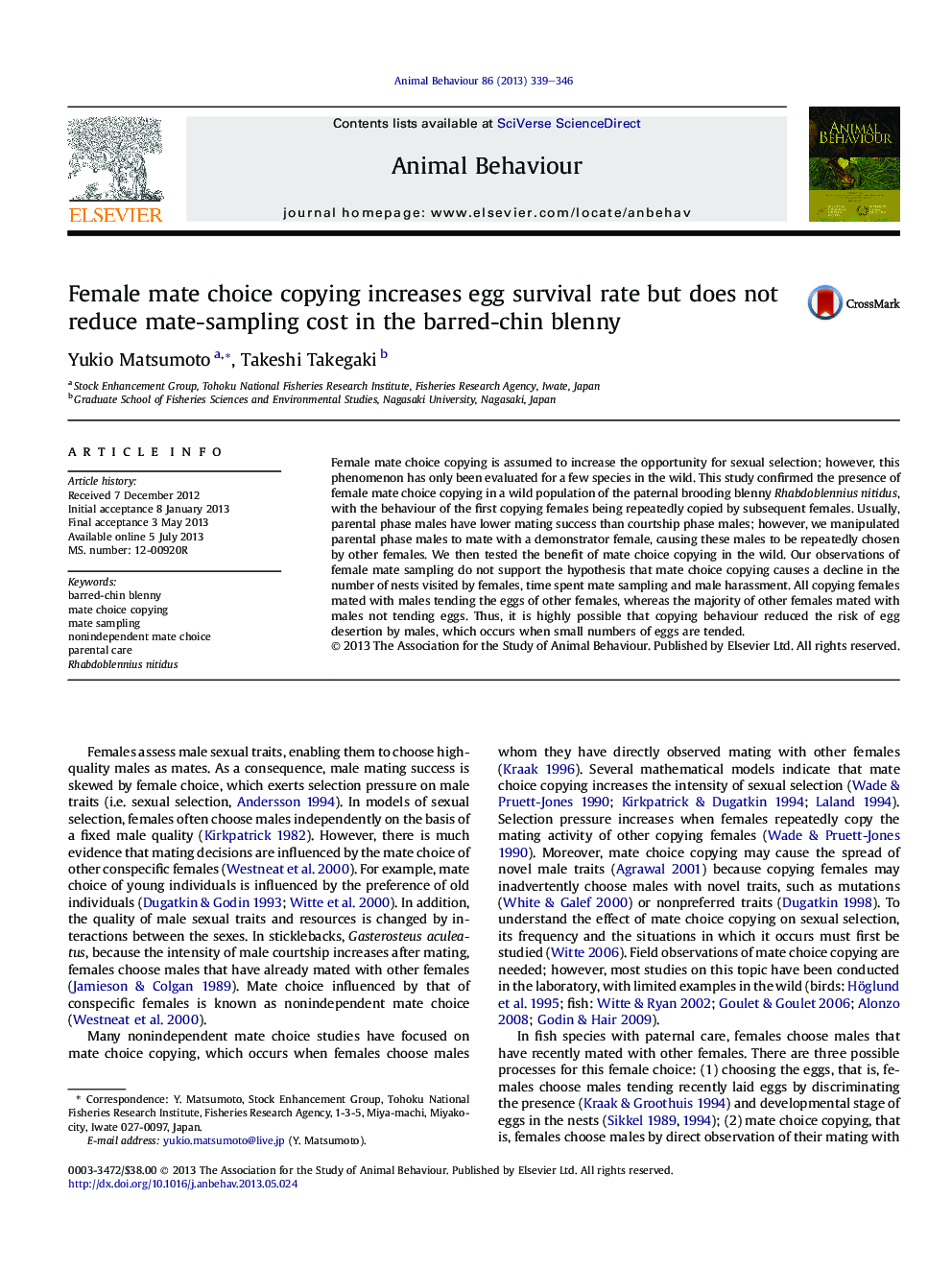| کد مقاله | کد نشریه | سال انتشار | مقاله انگلیسی | نسخه تمام متن |
|---|---|---|---|---|
| 2416599 | 1104282 | 2013 | 8 صفحه PDF | دانلود رایگان |

• Female mate choice copying in barred-chin blenny was tested in the wild.
• It was observed that mate choice copying occurs repeatedly.
• Mate choice copying in this species does not decrease the mate-sampling cost.
• Reducing the risk of male egg desertion is an advantage of mate choice copying.
Female mate choice copying is assumed to increase the opportunity for sexual selection; however, this phenomenon has only been evaluated for a few species in the wild. This study confirmed the presence of female mate choice copying in a wild population of the paternal brooding blenny Rhabdoblennius nitidus, with the behaviour of the first copying females being repeatedly copied by subsequent females. Usually, parental phase males have lower mating success than courtship phase males; however, we manipulated parental phase males to mate with a demonstrator female, causing these males to be repeatedly chosen by other females. We then tested the benefit of mate choice copying in the wild. Our observations of female mate sampling do not support the hypothesis that mate choice copying causes a decline in the number of nests visited by females, time spent mate sampling and male harassment. All copying females mated with males tending the eggs of other females, whereas the majority of other females mated with males not tending eggs. Thus, it is highly possible that copying behaviour reduced the risk of egg desertion by males, which occurs when small numbers of eggs are tended.
Journal: Animal Behaviour - Volume 86, Issue 2, August 2013, Pages 339–346